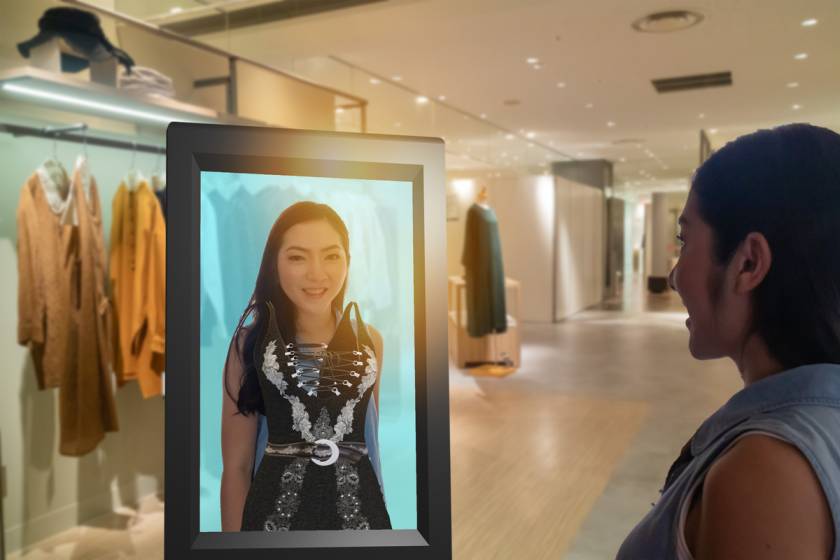Digital Showrooms Could Be The Future Of Shopping



Shopping has no end. People's needs are ever-growing, and they always find a reason to make purchases. “Add to cart” has become second nature for most. If the manufacturer or seller plays smart, it is a cakewalk to keep the cash registers ringing by closing multiple deals daily.
However, with the onset of the Covid-19 pandemic, every industry experienced a blow. With showrooms shutting down and retail appointments canceled, both shopaholics and brand owners were at the receiving end.
The need of the hour was to introduce a transformation in the shopping trends. With this in mind, brands decided to move their base from the offline arena to the virtual world. This led to the foundation of the concept of a digital showroom, which is now at its peak.
What is a Digital Showroom?
Digital Showrooms act as a virtual point of display and sales for brands active across different industries. There is no denying that digital showrooms have been around for a long time now. However, their popularity has received a next-level boost only recently.
The very first online sale purchase transaction took place in 1994. Surprisingly, some 27 years ago.
Indeed, an interesting fact worth noting. Today, this concept has turned into a multi-trillion-dollar industry.
These showrooms allow brands to create an online platform where buyers and sellers can come together. Here, they enjoy the liberty of displaying their products and new seasonal collections with the help of photos and videos. In addition, the prospect receives complete information right from the product specifications, the pricing, and expected delivery at a click of the button.
With this concept in play, the need for physical interactions and pre-scheduling got ruled out.
What is best is that there are no worries about physical sampling inabilities as 3D virtual sampling has been fast rolling.
The quantum of sales will grow with the growth of digital platforms as buyers can now make purchases round the clock, in most cases 24/7, 365 days.
As per National Research Federation, 80% of online shoppers and 63% of mobile shoppers have gone on record to claim that new technologies and innovations have helped improve their shopping experience.
Why is a digital showroom likely to be the future of shopping?
· Cost-Effective Approach:
For starters, digital showrooms help to do away with the costs and overheads associated with setting up and running a physical unit. It is both easy and cost-driven to lay the foundation of a virtual showroom.
With customers now making purchases at a click of the button, they can save up on traveling, which further offers a cushion to make additional purchases. In turn, this helps in boosting sellers' sales and bottom lines.
· Better Responsiveness:
By moving to a digital showroom, sellers can be more available to the buyers. When a buyer shoots any queries via calls, emails, or chats, the customer support unit is responsible for initiating an immediate reply.
For instance, a customer falls for a gorgeous lehenga displayed at a digital showroom. He gets interested to know details about the rich work that the lehenga carries. He can now drop in his query and receive a revert in no time. What follows is the lehenga being sold out.
· Improved Visibility:

Most brands decide to participate in exhibitions and trade shows. However, such participation lasts only for a few days. Contrary to this, when a digital showroom is in place, there is scope for the engagement levels to improve every passing day.
Moreover, by going live online, brands can experience better visibility. With this, their presence is engraved in the minds of prospects and past customers.
· Enhanced Reach:
When brands stick to traditional channels of sale, their geographical reach is restricted. As a result, they can market to people residing only in the immediate vicinity, further narrowing their sale prospects.
On the other hand, digital showrooms allow brands to take their products to every nook and corner. It provides them a ready opportunity to close deals between different cities, states, and countries.
The result is a boost to the sales and profit graph.
· Real-time Analytics:
When brands plan their sales through offline channels, it is challenging rather than impossible to check the customer demographics. They cannot zero down on information; as to where the customers have had the most inclination or what led to transactions in a particular section from processing faster.
This is not the case concerning digital showrooms. It is possible to study the behavior of every visitor. As a result, brands better understand products that garnered maximum attention. Similarly, the section that converted sales faster can be derived.
With this, it becomes possible to draw a further plan of action, which is in line; with the customer expectations and demand.
With the many benefits associated with digital platforms, it is obvious to see most brands relying on this channel. The aim is to offer a satisfying shopping experience to the customers. This platform has been breaking records, making it a viable option for brands irrespective of the scale and nature of their business.
As per the recently published report by Statista Research Department, in 2020 alone, over 80% of the customers took to online shopping globally.
It indeed marks a breakthrough for the concept of digital showrooms.
Additionally, Artificial Intelligence has a role in making the experience across digital platforms smooth sailing. By joining hands with AI, it becomes possible for brands to boost customer engagement levels.
It also becomes possible to generate leads and convert them in a fast-paced and conducive digital environment. In addition, AI has made available inputs such as voice assistants, chatbots, customer-centric recommendations, visual search, sales forecasting, and much more.
Digital Showrooms – The Future of Shopping

Digital Showrooms have empowered leading brands across the globe. Equal benefits are experienced by the fashion and apparel industry as well.
As per Mckinsey & Company, 35% of consumers browse for fashion inspiration in online shops at least once per week.
This is enough reason for fashion and apparel brands to move base to the online world.
As a first-timer brand interested in floating a digital showroom to launch an upcoming collection or to get in touch with genuine manufacturers, Fashinza is the place to be. Their in-house team takes care of everything right from design to delivery.
To help brands make a mark in the online fashion world, experience and expertise count. Fashinza has a rich network of 700+ manufacturers, with the numbers skyrocketing with every passing day.
Additionally, having worked with 500+ brands spread across different countries like the USA, UK, UAE, Mexico, Canada, and India, they can certainly make a difference in helping brands. It includes support to set up a base, improve the sales graph, work towards customer loyalties, and, of course, enjoy a long and sustainable standing in the industry.
It can be backed by evidence that digital showrooms are the future of shopping, which is why every brand needs to gear up and set one for themselves.
For all your clothes sourcing needs, get in touch with Fashinza now.



















